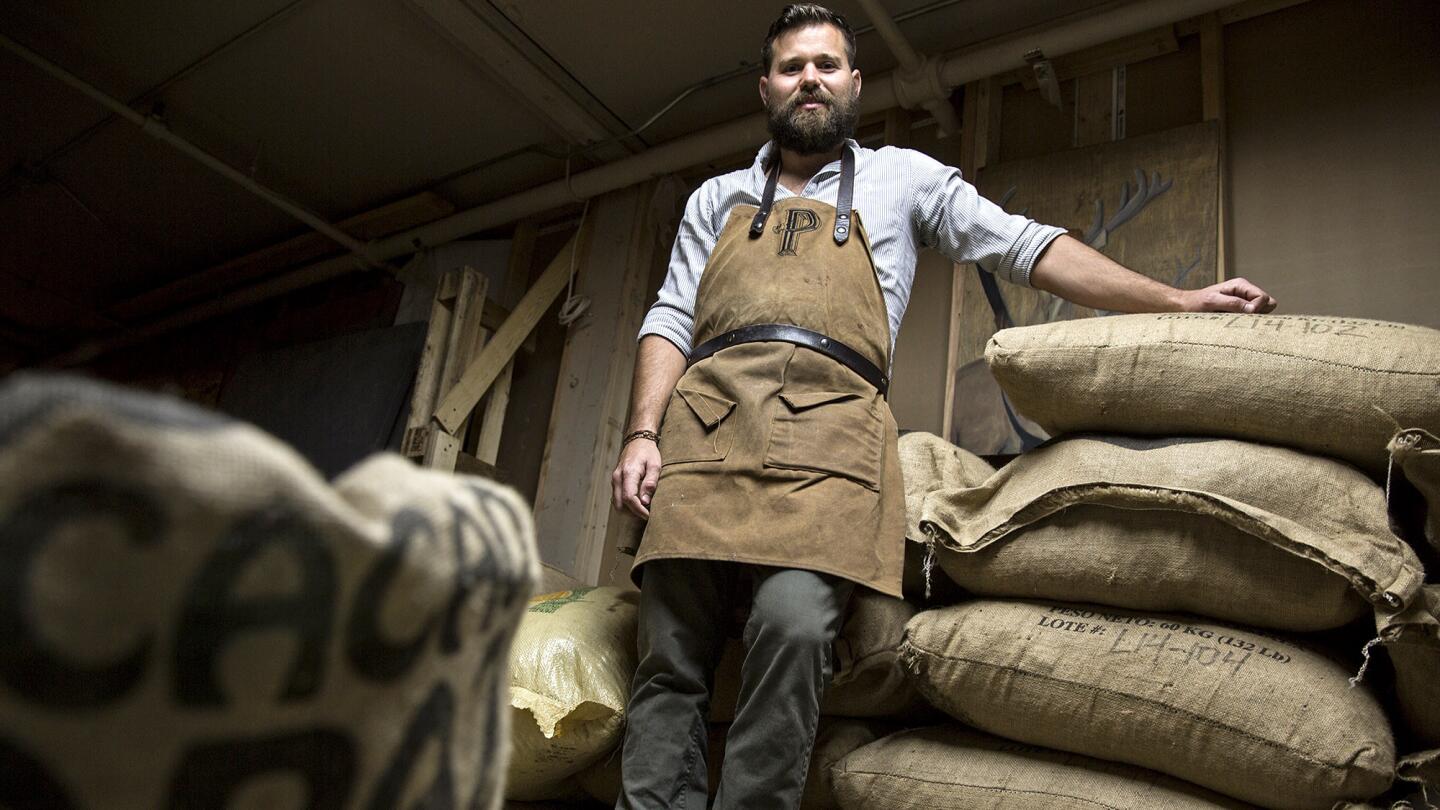By trading directly with farmers, artisan chocolatiers believe they can ensure fair prices and preserve a source of unique flavors that largely don’t exist in a business dominated by Wall Street traders and a handful of multinational candy giants.
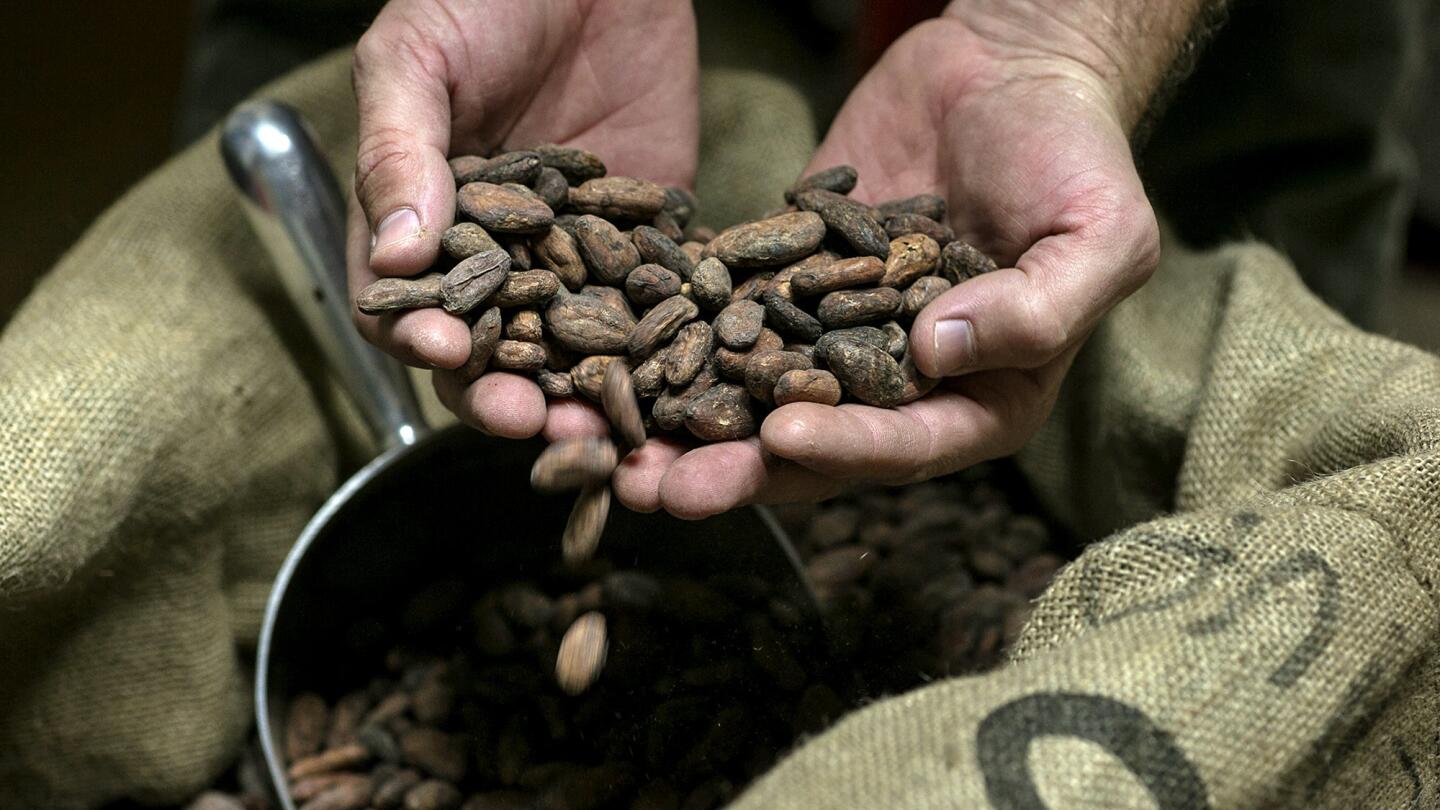
Ryan Berk of Parliament Chocolate sifts cocoa beans from Guatemala. He flies to Central America four times a year, hiking over Maya ruins to remote jungle villages and meeting face-to-face with the farmers who supply his beans. (Robert Gauthier / Los Angeles Times)
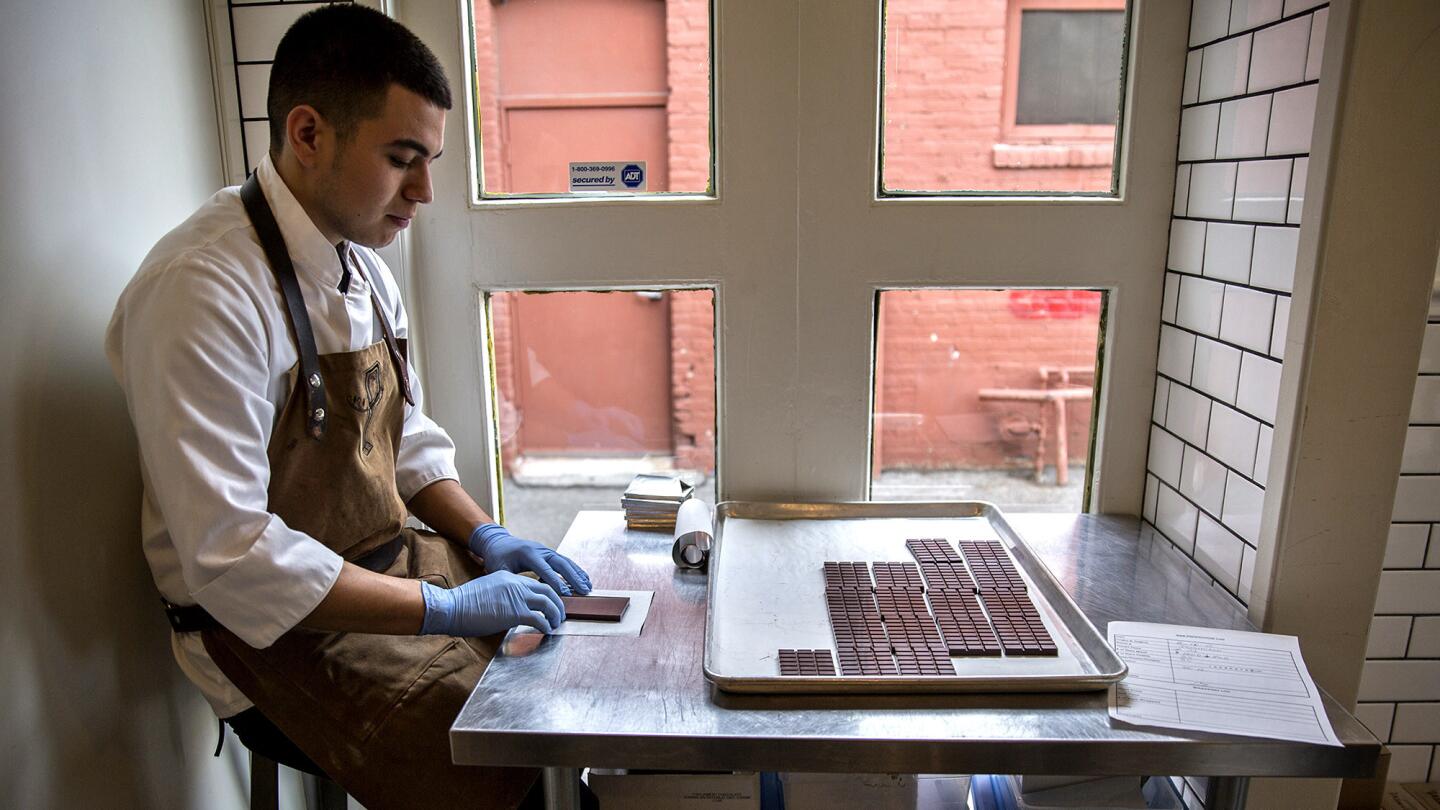
Chocolate maker Hiram Hauchbaum meticulously hand-wraps Parliament Chocolate bars. He and two co-workers wrap nearly 1,000 bars per week. (Robert Gauthier / Los Angeles Times)

Hiram Hauchbaum prepares bars for wrapping. The number of chocolate makers in the U.S. who identify with the bean-to-bar movement -- by either sourcing cocoa directly from farmers or buying it from specialty importers -- has grown tenfold in the last decade. (Robert Gauthier / Los Angeles Times)
Advertisement
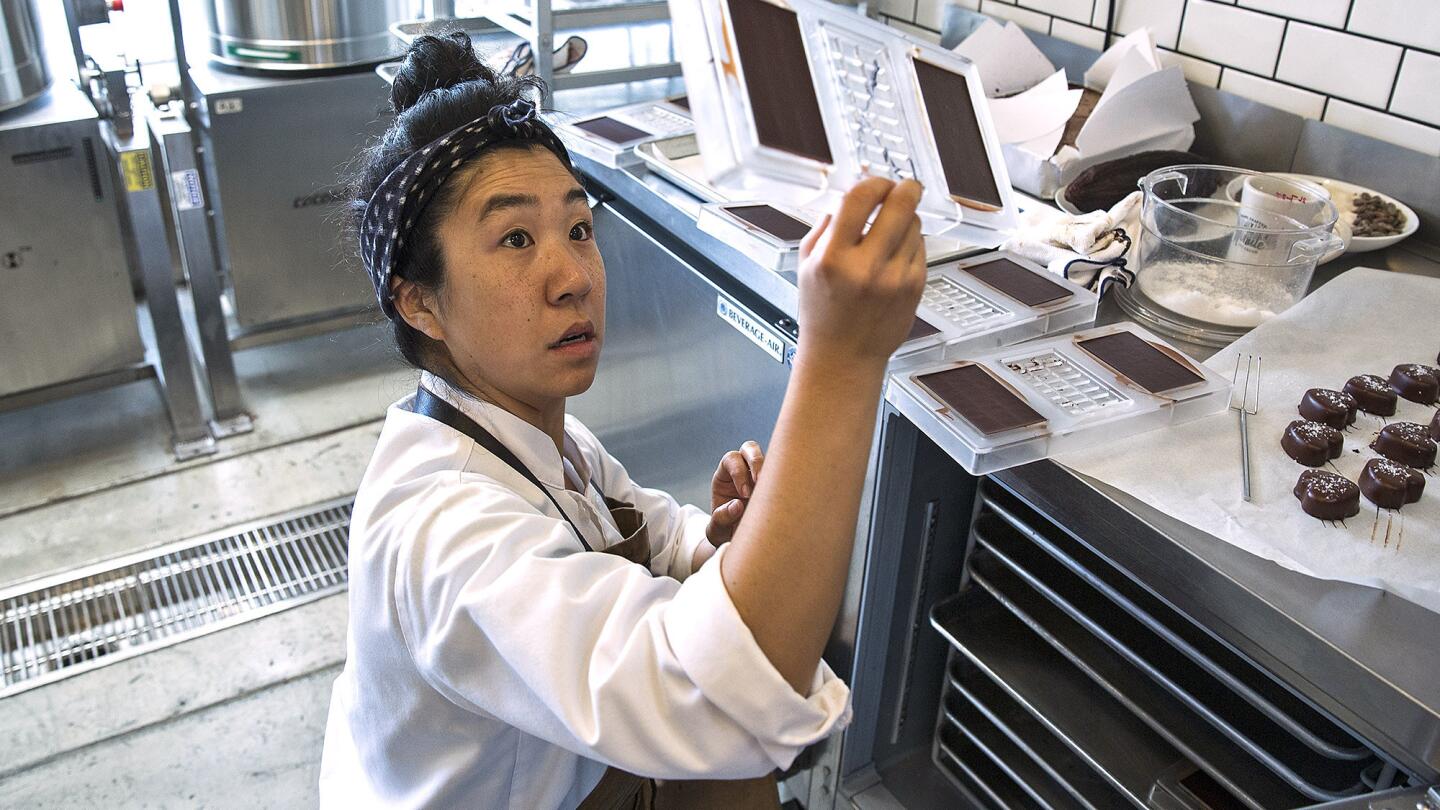
Chocolatier Rebecca Hsu inspects a bar mold to see if it’s ready for packaging at Parliament Chocolate in Redlands. (Robert Gauthier / Los Angeles Times)
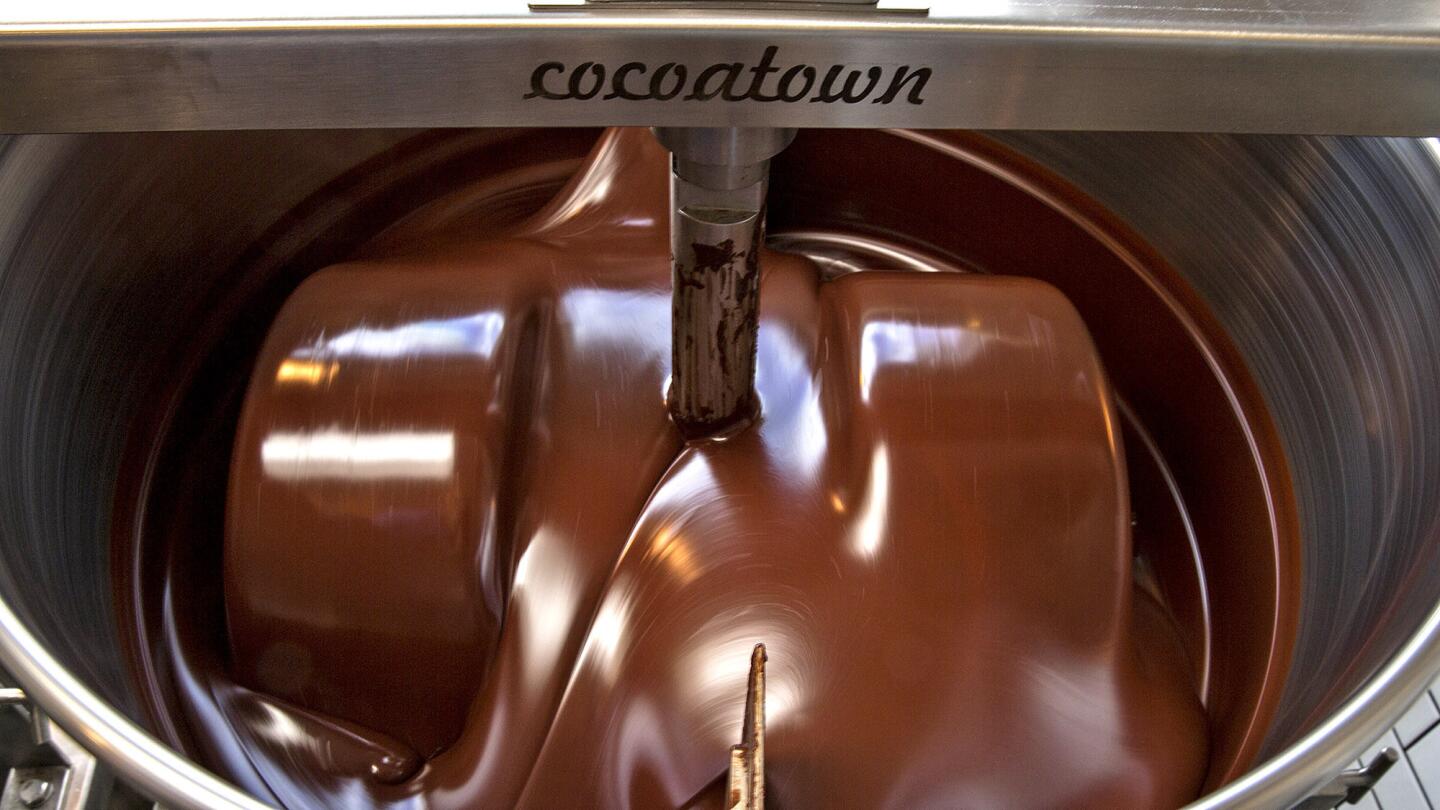
Crushed cocoa beans are processed with sugar and other ingredients in a melanger for hours, binding them to detailed specifications. (Robert Gauthier / Los Angeles Times)
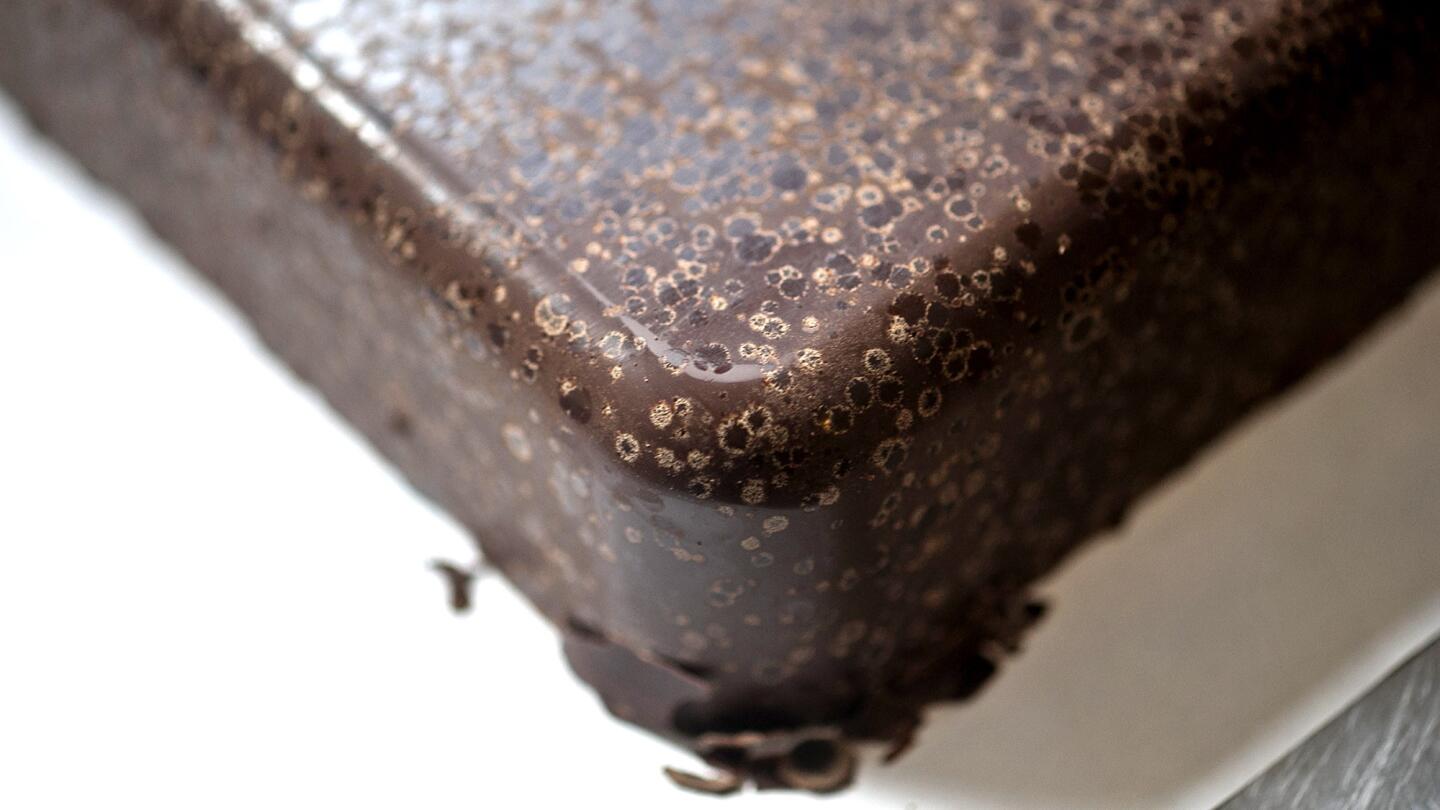
A 9-pound brick of chocolate resembles a lunar landscape after a few days in the cooler. It will be melted again and poured into bar molds at Parliament Chocolate. (Robert Gauthier / Los Angeles Times)
